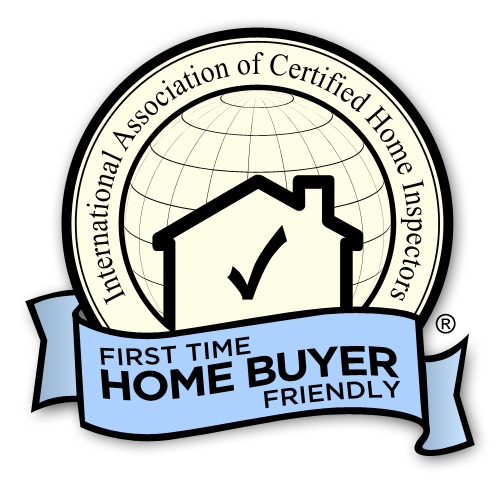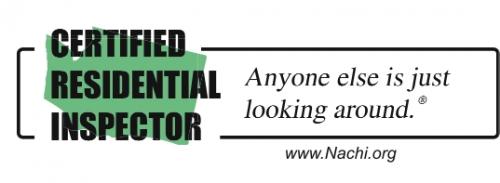Range Hood Ducts- Know what is the correct material.
Wenatchee Home Inspections
I have a little saying about the box stores (Lowes, Home Depot etc)- “Just because they sell it does not make it right. They are in the business of selling stuff, but not necessarily the business of selling the right stuff”.
These stores will have many products that they sell that may not be used or not used in an application that they allude to.
Here is an example I found, Range Hood Ducting Material.
They advertise this material - “Use for bathroom fan and kitchen range hood exhausting”
Here is the problem. The code does not allow this material.
From the 2015 IRC-
(The highlighted and underlined section shows that this material is not allowed)
Section M1503 Range Hoods
M1503.1 General
Range hoods shall discharge to the outdoors through a duct. The duct serving the hood shall have a smooth interior surface , shall be air-tight, shall be equipped with a back- draft damper and shall be independent of all other exhaust systems. Ducts serving range hoods shall not terminate in an attic or crawl space or areas inside the building.
Exception: Where installed in accordance with the manufacturer's instructions, and where mechanical or natural ventilation is otherwise provided, listed and labeled ductless range hoods shall not be required to discharge to the outdoors.
M1503.2 Duct Material
Ducts serving range hoods shall be constructed of galvanized steel, stainless steel or copper.
Exception: Ducts for domestic kitchen cooking appliances equipped with down- draft exhaust systems shall be permitted to be constructed of schedule 40 PVC pipe and fittings provided that the installation complies with all of the following:
-
The duct is installed under a concrete slab poured on grade .
-
The underfloor trench in which the duct is installed is completely backfilled with sand or gravel.
-
The PVC duct extends not more than 1 inch (25 mm) above the indoor concrete floor surface.
-
The PVC duct extends not more than 1 inch (25 mm) above grade outside of the building.
-
The PVC ducts are solvent cemented.
So this shows you that this material is not allowed per code. Now they are not the only ones who are at fault here. Here is an online store that promotes materials that can not be used for kitchen range hood applications.
“For lightweight applications like home kitchen stove hoods we offer an aluminum ventilation duct. The aluminum ducting provides a great temperature with extremely high heat resistant with great chemical abating properties; truly, the single-ply, helically corrugate alloy of this flex ducting is something to marvel at. What’s more, this kind of hood ducting is generally sold in several different lengths, facilitating its use in many different commercial and industrial settings, which makes them perfect for residential ventilation situations. Ranging in interior diameters from 2 inches up to 12 inches, aluminum hood ducts are suitable for virtually every interior environment imaginable.”
https://www.ducting.com/high-temperature-hose-ducting/hood-ducting
As you can see from their description this is an issues on a couple of levels.
One-
is the material is aluminum, the code specifies the “Ducts serving range hoods shall be constructed of galvanized steel, stainless steel or copper.”
Two-
Helically corrugate alloy of this flex ducting, the code specifies the “The duct serving the hood shall have a smooth interior surface”.
It is no wonder why many DIY’ers and handymen end up using these materials because they often do not know what the requirements are for ducting and find these materials easier to install.
Here is an example from a recent home inspection.
Just in case you think it may have been allowed in the past- Here is from the
2000 IRC
SECTION M1502
RANGE HOODS
M 1502.1 General. Range hoods shall discharge to the out doors through a single-wall duct. The duct serving the hood shall have a smooth interior surface, shall be air tight and shall be equipped with a backdraft damper. Ducts serving range hoods shall not terminate in an attic or crawl space or areas inside the building.
Range hood ducts must also meet the manufacturer’s requirements. Don't ever use 4" ducting or any plastic ducting on a range hood installation.
Per most manufacturers the minimum size duct allowed for range hoods is 3 ¼" by 10" which is equivalent to 6" round. Larger and hoods with higher CFM’s (cubic feet per minute) require even larger duct sizes up to 10"and 12” round.
When remodeling or replacing the range hood and/or the associated ducting never reduce the ductwork size to less than the size specified by the manufacturer for the range hood. Decreasing the duct size restricts the performance and decreases the unit's longevity and can. Try to make the ducting as straight as possible to reduce restrictions in the ducting.
One last note, beware of information on the internet. Often people will cite improper information, when in doubt read the code or contact your local building department or AHJ (Authority having jurisdiction).
A little historical review.
The first instance for the requirement for requirement of a smooth wall duct shows up in the 1993 CABO in the publication of the 1993 and 1994 Amendments.
M-1901.4 Range hoods:
Range hoods shall be vented to the outdoors by a single-wall duct constructed of galvanized steel, stainless steel, copper or other material approved by the building official for the use intended. The duct serving the hood shall have a smooth interior surface, be substantially airtight and shall be equipped with a back-draft damper. Vents serving range hoods shall not terminate in an attic or crawlspace or any area inside the building. Labeled unvented range.
In my research a little farther back to the 1992 CABO you do not find the requirement for smooth wall. So if you have an older installation you should note that the ducting issue and preface it that the requirement may have not of been there.
From the 1992 CABO code
M-1901.4 Range hood:
Range hoods shall be vented to the outdoors by a single-wall pipe constructed of galvanized steel, stainless steel, copper or other material approved by the building official for the use intended. Vents serving range hoods shall not terminate in an attic or crawl space or any area inside the building. Labeled unvented range hoods shall be installed in accordance with the terms of their label.
“Ultimately, education in its real sense is the pursuit of truth. It is an endless journey through knowledge and enlightenment.”
A. P. J. Abdul Kalam
(A. P. J. Abdul Kalam was an aerospace scientist who served as the 11th President of India from 2002 to 2007.)
If you find any errors or have additional information that would expand on any code, building standards or manufacturer requirements please let me know.
NCW Home Inspections, LLC is a Licensed Washington State Home Inspection service located in Wenatchee Washington serving Chelan County, Douglas County, Kittitas County, Okanogan County and Grant County Washington and the cities of Wenatchee, Leavenworth, Cashmere, Oroville, Cle Elum, East Wenatchee, Quincy and many more…
Your Wenatchee and Chelan Professional Real Estate, Home and Structural Pest Inspection Service
Instructor- Fundamentals of Home Inspection- Bellingham Technical College
WA Home Inspector Advisory Licensing Board
www.ncwhomeinspections.com 509-670-9572
You can follow me on Facebook , Twitter , Google+ and on my website Blog .








